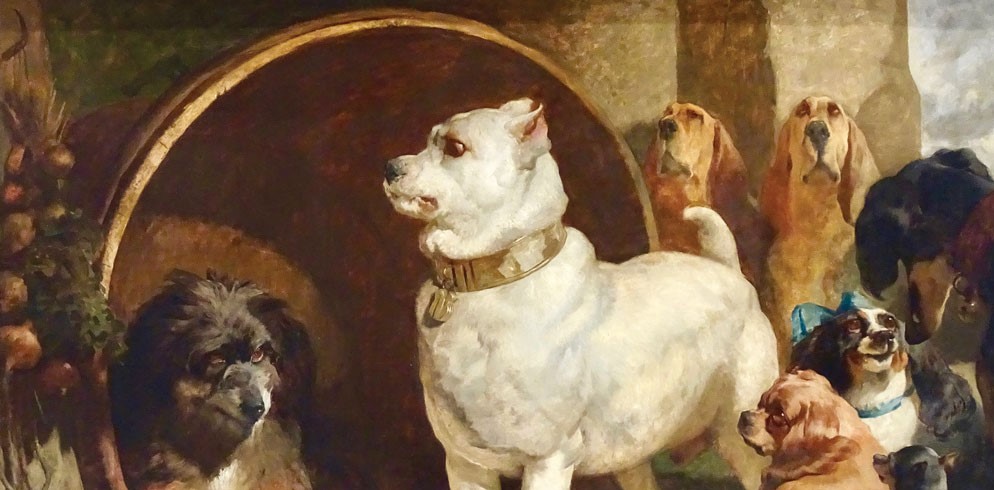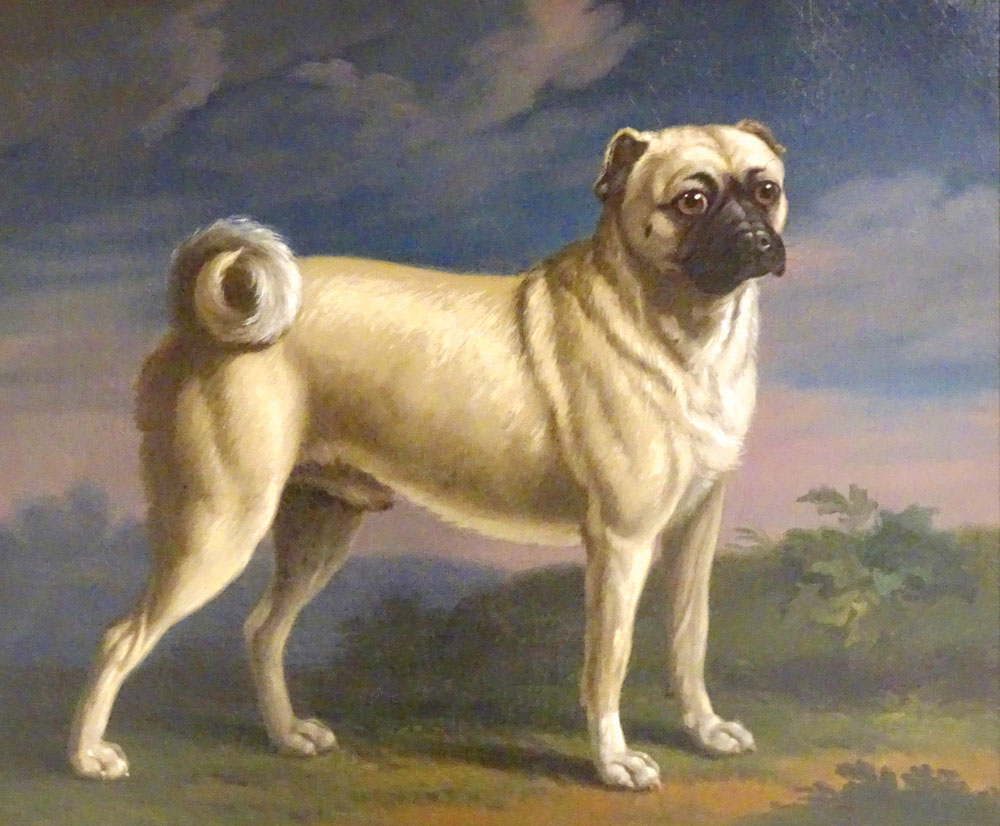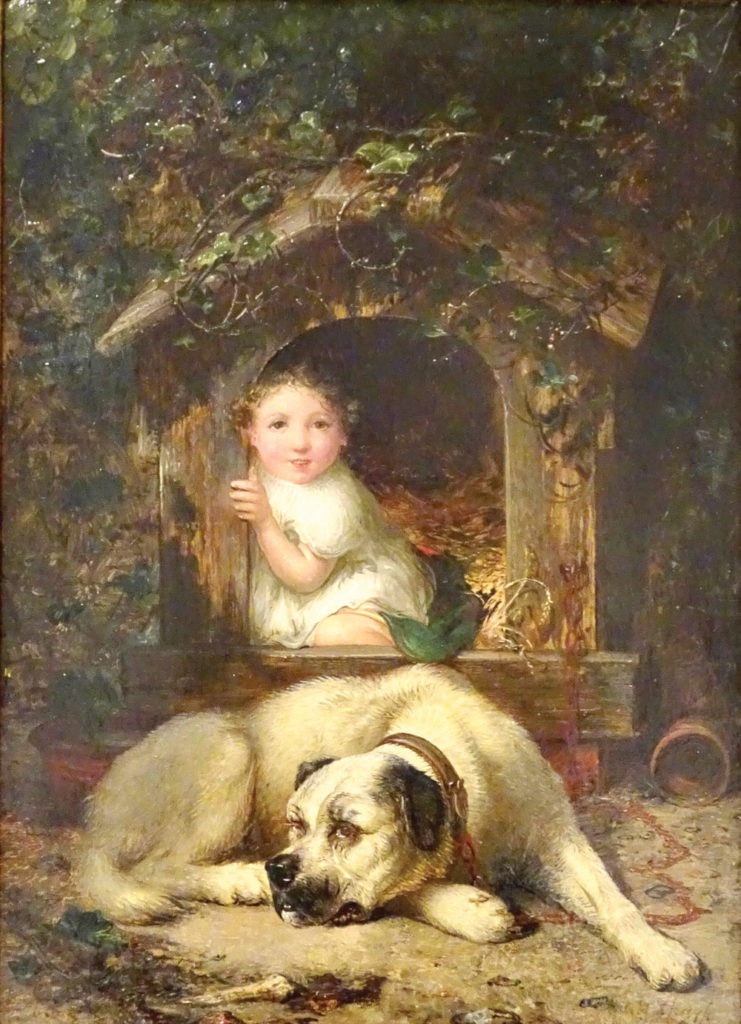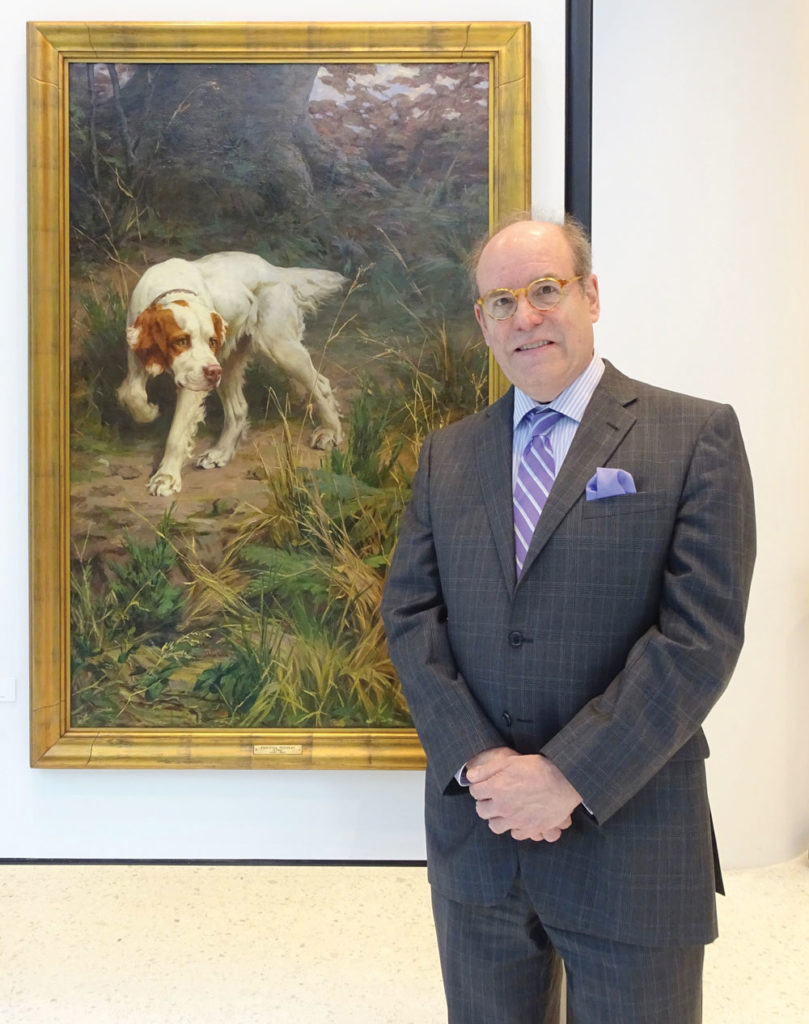A Visit to the Museum of the Dog

Story and Photos by Richard Hooper
Middleburg and its surroundings are well-known as an epicenter for horses and hounds. Not surprisingly, the area is a haven for dog lovers. As such, it is great news that the Museum of the Dog is now back in New York, just a short trip away.

Having visited the museum in its previous location, I knew something of the delights that were in store and eagerly awaited its return to the Big Apple. The museum was founded in 1982 and originally known as the Dog Museum of America – American Kennel Club Foundation. It was housed within the lobby of the New York Life building, where the AKC also maintained offices at that time. In 1984, the museum was relocated to St. Louis, Missouri, where it remained for 35 years, returning to New York for a grand opening in February of this year. As in real estate, “Location, Location, Location” evidently applies to museums as well. As Alan Fausel, Executive Director of the museum, stated, “In 16 days in New York, the museum doubled the attendance of a year in St. Louis.”

It is an abundant feast for dog lovers and lovers of dog art and all things dog. Paintings line the walls, sculptures add a third dimension, and ornate, silver trophies dazzle. There are interactive videos for adults and children. An impressive stairway wraps around a 34-foot tall glass display case with levels of shelving supporting small bronzes and ceramics ranging in styles from Meissen to kitsch, from serious to whimsical. There is a wonderful dog cart that would have entertained an affluent Victorian family and an intricately detailed, small, wooden dog house for a lucky Chihuahua. For those interested in canine-related research, a portion of the AKC’s impressive book collection is housed in the museum, while the rarer books are in the AKC’s offices, located elsewhere in the building.

Along with aesthetic pleasure, canine art offers social insight into the interactions of dogs and humans in various themes, including sporting, allegory and morality, and genre scenes of everyday life. In its opening exhibition, the museum displayed a number of paintings within these categories. Joseph Henry Sharp’s painting from 1882, “In the Dog House,” depicting a young child inside a dog house that is being guarded by a mastiff.
Edwin Landseer used a supposed encounter between Alexander the Great and Diogenes (who lived in an overturned, ceramic wine vat and carried a lantern during daylight looking for an honest man) as an inspiration for a painting with seven breeds of dogs. The story goes that when Alexander found the Cynic philosopher Diogenes stretched out, warming himself with sunlight, he stood in front of him, unintentionally blocking out the sun and asked Diogenes if there was anything he could do for him. Diogenes replied, “Please step out of my sunlight.” In the painting, there is a distinct sneer on the muzzle of Diogenes, with Alexander and the other dogs clearly taken aback. Alexander went on to say that if he were not Alexander he would wish to be Diogenes, to which Diogenes replied, “If I were not Diogenes, I would still wish to be Diogenes.”

There are several displays focused on war dogs. One is of Smoky, a Yorkshire terrier born in Brisbane, Australia, in 1943. She was Australia’s first war dog and served for 18 months during WWII as a mascot for Australian troops. Included among the items on display are Smoky’s parachute, her Australian Defense Force Tracker and War Dog medal, and photographs and artwork depicting her her. There is also a recent bronze sculpture of Sgt. Stubby, a WWI dog wearing a uniform made by women of Chateau-Thierry, France. Stubby, a stray, wandered onto the athletic field at Yale where the 102 Infantry was training. He was adopted by Robert Conroy, who smuggled him aboard the ship carrying the 102nd to France, where he saw 210 days of combat on the front lines. Wounded in action, Stubby, could detect gas attacks and incoming artillery before anyone else. He captured a hiding German soldier and killed the rats that plagued the trenches.

America, 1891.
A new exhibition, opening July 7 and running through Sept. 8, is entitled “Women and Dogs in Art in the Early 20th Century.” It will feature the work of Maud Earl, Lucy Dawson, Mildred Megargee, Diana Thorne and others. So, along with the Met (museum and opera), broadway, restaurants and shopping, the Museum of the Dog is something well worth to one’s New York itinerary. It is located at 101 Park Avenue and is open from Tuesday through Sunday.
This article first appeared in the June 2019 issue of Middleburg Life.








